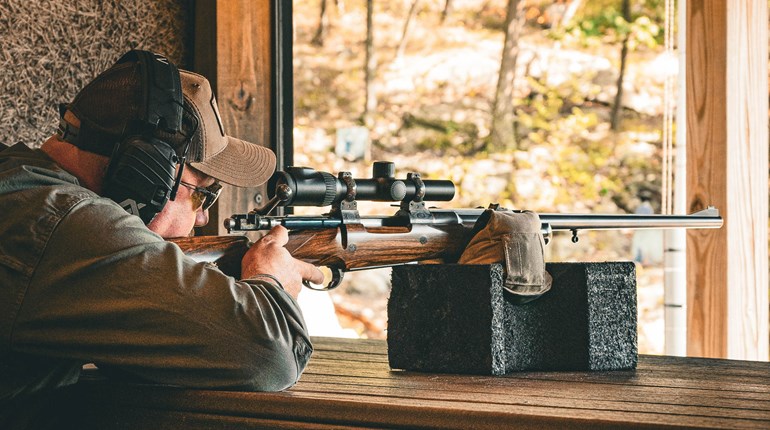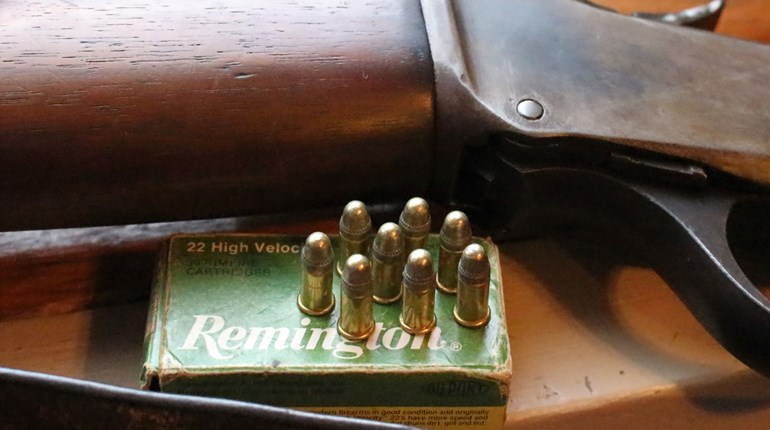
Here we have a pair of short-action gems, and two of the handiest cartridges ever to grace the deer woods. Both are are easy to shoot, can be housed in easy-to-carry, lightweight rifles and neither cartridge requires a country mile of barrel length to get the best performance. One was bred for war, and the other was a target cartridge, but both serve the hunter well, especially as an all-around rifle. Let’s look at the pros and cons of both cartridges, to see what they do and don’t have to offer.
The .308 Winchester was released as a sporting cartridge before it was officially adopted as a military round; the comparisons between the new, shorter case and the .30-06 Springfield were immediate, and continue to this day. Using the same .473-inch case head diameter of the Springfield (which in turn was borrowed from the 8x57mm Mauser, the Patrone 88 design), the .308 Winchester uses a case measuring 2.015 inches, in comparison to the Springfield’s 2.494 inches. The .308’s overall length is 2.800 inches, compared to the Springfield’s 3.340 inches; those two measurements have come to define our short- and long-action rifle receivers, respectively.

Equipped with a 1:12ʺ twist rate on most of the early rifles, the .308 Winchester could stabilize bullets weighing up to 200 grains; the heavy 220-grain round nose requires a 1:10ʺ twist to be properly stabilized. The .308 works very well with bullets in the range of 125 to 200 grains, with the 150-, 165- and 180-grain choices being the most popular. The rimless case uses a 20-degree shoulder for headspacing, and has a neck measuring 0.303-inch, or just short of one caliber, sufficient to hold bullets in place without needing a heavy roll crimp. The 165-grain load—probably the most popular of the lot—leaves the muzzle at between 2650 and 2700 fps, depending on the load and the rifle. With a 200-yard zero, a decent spitzer will drop 9 inches at 300 yards and 26 inches at 400 yards, making it a solid contender for an all-around big-game rifle. The lighter 150-grain loads make a sound choice for deer and antelope hunters, and for those who want to take their .308 for heavier game like moose, elk and bear, there are a good number of 180- and 200-grain loads to choose from.
Just a few years after the introduction of the .308, the wildcatters mated the case with 7mm bullets. The 7mm/308 wildcat showed all kinds of promise, especially among the target shooters who appreciate any reduction in recoil. It stayed a wildcat for over two decades until Remington—long famous for adopting wildcat cartridges like the .257 Roberts, .22-250 Remington, .25-06 Remington and .35 Whelen—made an honest cartridge out of the 7mm/308; in 1980, the 7mm-08 Remington saw the light of day. The 7mm-08 case is just slightly longer than the parent .308—2.035 inches vs. 2.015 inches—but maintains the same 20-degree shoulder of the .308 Winchester. The 7mm-08 can use the full spectrum of 7mm bullets, from the short, frangible 100-grain hollowpoints designed for varmints, up through the 120-, 140- and 150-grain bullets which handle deer and similar-sized game so well, to the heavier 160- and 175-grain projectiles that will sort out moose, elk and black bear.

The 140-grain loads—the most popular among the factory loads for the 7mm-08—leave the muzzle at right around 2800 fps, and with a 200-yard zero, will drop 8 inches at 300 yards, and 24 inches at 400 yards. You can see the similarity in trajectory with the 165-grain .308 load, as both the 140-grain 7mm bullet and 165-grain .308-inch bullet share the same sectional density at .248. With comparable muzzle velocities (the 7mm-08 is a bit faster with the 140-grain load) the difference in holdover is negligible.
The difference between these two cartridges is going to come down to a couple of simple questions. Do you, as the prospective owner of one or the other of these cartridges, prefer 7mm bore diameter over .30 caliber, or vice versa? And, does the increase in felt recoil of the .308 Winchester make a difference? Tackling the latter question first, I can report that there is a noticeable difference in felt recoil between the two—not enough to make me think twice about it, but it is there. If you’re considering one of the two for a young hunter, the 7mm-08 Remington will be easier to master.

Regarding the bullet diameter issue, the 7mm versus .308-inch debate has raged for over a century, with no apparent victor. In the case of these two cartridges, the choices top out at 175 grains in 7mm and 200 grains in .30; I suppose the decision could come down to whether or not you intend to use the heaviest bullets for the respective calibers, and use them routinely. With modern bullet construction, the premium 160-grain 7mm bullets and 180-grain .30-caliber bullets are no joke at all, and will probably handle any game animal you’d hunt using either bore diameter. If you felt you needed a bit more, a premium 175-grain 7mm or 200-grain .30 would make serious medicine, albeit at a lesser velocity.
I have spent decades behind the trigger of a .308 Winchester, having used my Ruger 77 MKII since 1993 for all sorts of hunting here in New York and abroad, as well. I’ve used that rifle for factory ammunition testing, as well as developing dozens of handloads for it. I’ve also acquired a sweet Tikka T3 Lite in 7mm-08 Remington, and have spent a considerable amount of time with that rifle, with both factory loads and handloads. For my own hunting, I’d feel comfortable taking either afield.

The .308 is the more popular of the two cartridges, based on the availability of surplus ammunition, and its military background. The 7mm-08 gives better ballistic coefficient and sectional density values when comparing bullets of the same weight, the .308 will offer a greater frontal diameter. Which gets the nod?
I’ve got to give it to the .308 Winchester, and only by a hair, because of the wide array of rifles and ammo available just about anywhere. I was raised on a .303—my Dad has shot the same Mossberg Model 100A in .308 since he got out of boot camp in 1969—and with a proper bullet, it can do just about anything you’d ask it to. That said, if I were shopping for a rifle and found one that fit me well, and I loved, but was chambered in 7mm-08 Remington instead of .308, I’d be bringing it to the checkout counter without hesitation.
Looking for previous installments of our "Head to Head" series? We've got you covered.
• 6.5 Creedmoor vs. .260 Remington
• .303 British vs. 8x57 Mauser
• .30-06 Springfield vs. All Other .30s
• .17 HMR vs. .17 WSM
• .450 Nitro Express vs. .470 Nitro Express
• 350 Legend vs. .35 Remington
• .280 Ackley Improved vs. 7mm Rem. Mag.
• .404 Jeffery vs. .416 Rigby
• .243 Winchester vs. 6mm Creedmoor
• .300 PRC vs. .300 Win. Mag.
• .30-06 Springfield vs. .270 Winchester
• 6.5 Creedmoor vs. 7mm-08 Remington
• 8x57 Mauser vs. .318 Westley Richards
• .358 Winchester vs. .350 Remington Magnum
• .22-250 Remington vs. .220 Swift
• .270 Winchester vs. .270 WSM
• .26 Nosler vs. 6.5-300 Weatherby Magnum
• .458 Win. Mag. vs. .458 Lott
• 7mm Rem. Mag. vs. .300 Win. Mag.
• .243 Winchester vs. 6mm Remington
• 7x57mm Mauser vs. 7mm-08 Remington
• .25-06 Remington vs. .257 Weatherby Magnum
• .338 Winchester vs. .375 H&H Magnum
• .30-30 Winchester vs. .35 Remington
• .257 Roberts vs. .250-3000 Savage
• .270 Winchester vs. .280 Remington
• .35 Whelen vs. 9.3x62mm Mauser
• .416 Rigby vs. .416 Remington Magnum
• .308 Winchester vs. .30-06 Springfield
• .22 Nosler vs. .224 Valkyrie
• .300 Win. Mag. vs. .300 WSM
• .223 Remington vs. .22-250 Remington



































